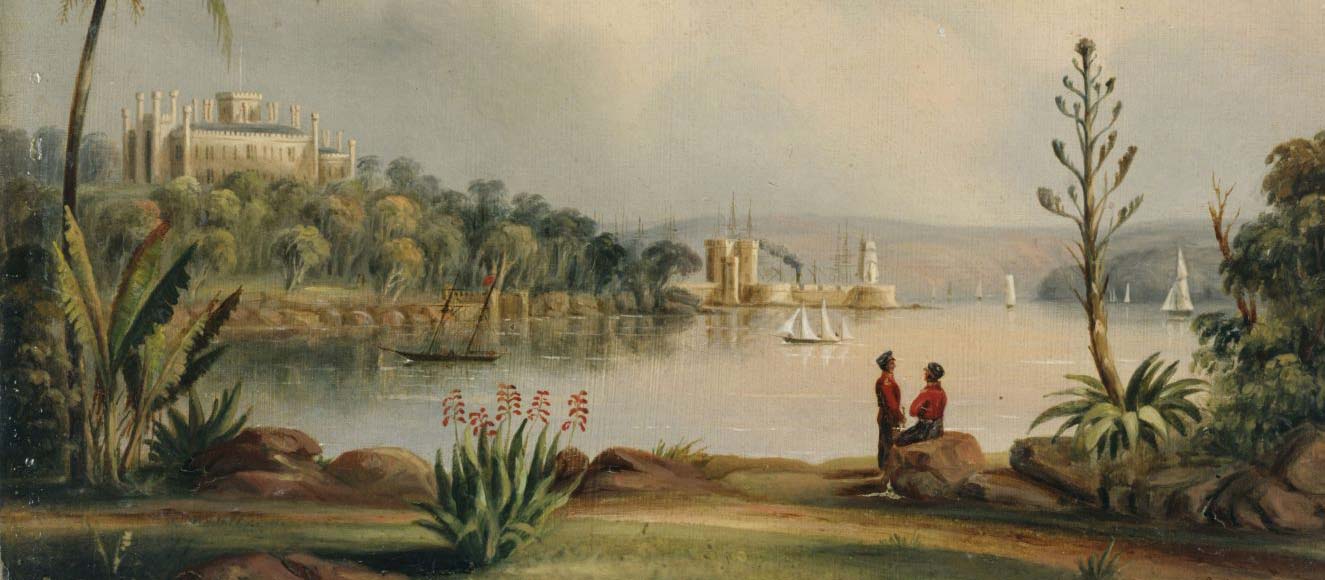The Hunt for Purple November: Grafton’s Jacaranda Festival

- Words by
- Alina Golovachenko
- Images by
- Alina Golovachenko
‘When at last they reluctantly decided to call it a night… here and there the spectral branches of trees forlornly dangled streamers which, with the bunting, moved languidly in the breeze as though bidding farewell to the Jacaranda Festival of 1935.’ – The Daily Examiner, 1935
82 years later, the town of Grafton in northern New South Wales still celebrates the mass planting of its lilac-blooming trees in what has become the longest running floral festival in Australia.
‘Jacaranda’ comes from the Native American Tupi word ‘yacaranda’. The name refers to having a hard branch or core, and refers to a genus of approximately 50 species of trees. However, it is the Jacaranda mimosifolia – the blue jacaranda – that is celebrated every year.
The first samples arrived in Australia in the 1850s from South America. In the late 1800s Grafton seed merchant and nurseryman Henry Volkers was instructed to only plant jacarandas. By the 1920s they attracted regular visitors and in 1935, after the Depression and shortly before the Second World War, the first Jacaranda Festival was held.


Held over two nights in Jacaranda Avenue, events included maypole sets of rainbow crinoline, children’s folk dancing, community singing, jazz bands, wartime songs, a Jacaranda Nymph Ballet, a floral pageant, and ‘The Quest for Princess Jacaranda’, who wore a crown of blooms from Jacaranda Avenue.
The National Film Board’s 1949 film on the event intones jauntily: “Folk from all around the district come into Grafton for the festival. People who have left the district come back to meet old friends. They walk along the old familiar streets and yarn about old times.”
True then, true now. Also a photographer, my best friend from high school Shelley McPhee and I decided to meet up to shoot the Festival. I hadn’t been back in over 20 years.
Within minutes, we were laughing at the mile-wide local accents galloping back to us. We recalled the crepe paper stains we got from the school dance performances at the show grounds, with routines painstakingly organised by teachers year-long to songs like ‘I Can Sing a Rainbow’ and ‘The Rivers of Babylon’. The main event that concerned us in those days, however, was Jacaranda Thursday.
Jacaranda Thursday was shorthand to many of us then for general mayhem. To my mind it looked the same last year as 30 years ago: markets, bands, rides, Dagwood Dogs, kids roaming around with shaving cream and water pistols (that was us!) and pubs that get raucous as the afternoon wears on.
Small town theatrics flourish on backs of trucks as businesses compete for an award for the best skit. I remember my father putting on a particularly humorous piece involving two halves of a coconut shell for the sound of a horse.
And everything is mauve, lilac, purple. The Festival website suggests: bake and sell purple lamingtons, hold a purple-themed Devonshire tea served in purple tea cups, paint toenails/fingernails in Jacaranda Purple, provide a purple hair colour service ‘whether it be temporary or permanent’.

The festival still crowns a Jacaranda Princess, but also includes the Jacaranda Queen, Matron of Honour and Junior Jacaranda Queen. We stop and look at the wall of past royalty they have on display at the ice cream parlour. Remember her from school? And there’s my first boyfriend’s mum!
An elderly couple smirk as we crack up comparing notes. We are so glad to be back.
However, small towns inspire a mixture of celebration and cultural cringe from those who grew up there. Cold Chisel’s ‘Flame Trees’ notes that, through the intense nostalgia for the return, ‘nothing else can set fire to this town’ (Don Walker’s brother was my brother’s woodwork teacher at South Grafton High).”
Gillian Mears, a local until her recent death, wrote in The Mint Lawn, “Other towns celebrate cotton and cane produce with economic importance – but this town, with its pretty name, chooses the colour of tree blossoms. As a very young child, I thought it was more poetic for this reason until I began to see it as a tacky and embarrassing thing. And I began to feel the oppressiveness of the purple…”
Lawrence Johnson’s 2004 documentary Once A Queen reminds us of the real pride felt by some of the women of the town when witnessing, aspiring to and reminiscing about their ultimate princess moment. “One moment stands out: the image of young girls presented on the arms of their fathers on a hot spring night, all lined up on the street and entering the RSL from the side entrance, their names and the names of their fathers read out as they proudly parade through a large arched garland of Jacaranda blossoms to take their seat in anticipation of the Jacaranda Ball.”
These days festival organisers target visitors from Asia, long appreciative of floral events such as the turning of the cherry blossoms, which were partly an inspiration for the festival’s inception.
There is no denying the beauty of these trees among the celebrations, the kitsch, the old and new, the competitions, the crepe paper and crazy wigs. You see them as you catch a ferry, in your back yard, in full bloom in front of the Saraton Theatre, arching together in distant blissful haze along the Gwydir Highway out of town. Slowly romancing me into a dream that leads me to wonder how much a weatherboard house by the Clarence River sells for these days.
–
Images in this story are by Alina Golovachenko and Shelley McPhee.













